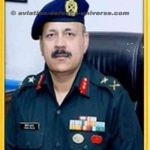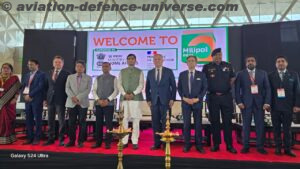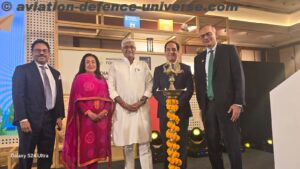
By Maj Gen Ashok Kumar, VSM (Retired)
New Delhi. 03 June 2022. Irrespective of the new world order emerging and lessons from Russia-Ukraine war being factored in by various countries, the need of qualitative equipment continues as one of the most important considerations the world over. India is also grappling with such necessities more so when planning to reduce import dependence and attempting enhanced focus on Aatmanirbhar Bharat.
While ‘Make in India’ and ‘Aatmanirbhar Bharat’ are positive and good initiatives, it will take time for these efforts to fructify to really become meaningful specially in the areas where advanced technology infusion is needed. With large No of negative lists, which is constantly growing, the option for technology transfer as part of limited import has also diminished. The current way out now is to convince foreign manufacturers of high end technology to collaborate with Indian companies to manufacture in India along with technology transfer business model which can be mutually worked out.
It is therefore important to have a clarity on our wish list of equipping our Armed Forces with appropriate mix of current day and future technologies albeit keeping the economical considerations in mind always. This is not a one time exercise but is a continuous process which has to be gone through when various stake holders interact with the manufacturers the world over. ‘One shoe fits all’ is not something that happens when one is looking at procurement/manufacture of equipment for one’s Armed Forces. Each nation has a different set of challenges on its borders based on its geography as well as type of adversaries. India too is no different. It has adversaries on both its borders and both are nuclear weapons armed besides being in nexus. China having made major strides in technology is not only at par with the best in the world but is surging ahead in certain categories than most of them.
The borders have multiple peculiarities like glaciers, high altitude areas (HAA), river valleys, ravines, desert and islands to name a few. This further adds to our challenges as in a No of cases each type of terrain requires different kind of equipment besides efficacy of No of equipment in the mountainous terrain gets adversely affected due to line of sight constraints or other terrain and weather related factors. It is therefore essential that India chooses its weapon profile more realistically. It has to factor the various limiting factors along with the possibility of redeployment of troops in more threatened sectors. The equipping therefore becomes more complex and challenging. Whether only the equipment with the units will meet the operational requirement or is there a need for certain sectors to stock weapons more suited to a particular terrain, will need to be carefully examined. The equipping has multiple challenges associated with it including timely maintenance, availability of spare parts, repair support and other logistical challenges.
It is also important to understand the rate of technology refresh. Catching up with each stage may be pretty difficult as procurement/manufacture takes time and not only that, the Armed Forces personnel need to be trained on these equipment besides exploiting them for usage which is also a time consuming process. It may therefore be pragmatic at times to skip some stages of technological upgrades to ensure economic investment gives value for money. Of course, there may be certain critical sectors where this option may not be practical.
Some of the technological inputs/type of equipment which should be looked at by various stake holders for equipping our Armed Forces within the ambit of our policy could be as covered below (the inputs are indicative and not exhaustive, to say the least):
Surveillance Equipment: This is most critical need for all the components of the Armed Forces. Some of the areas needing attention could be as under:
Satellite Based: These could be full fledged to mini satellites. Disposables or running till laid down time. It could be only appropriate payload with requisite sensors. Revisit rates/constellation based/capacity to place the sensors to a geo fixed location even when the satellite has moved from one location to another are important considerations. Capacity for the sensors to look at anti satellite weapons (ASAT) are also important since China has developed this capacity.
Aerial Platforms: These are AWACs category (both exclusively meant or use of any existing platforms modified with requisite payloads) . Low cost of sustenance and less Nos required to cover the entire border area upto requisite depth are the important considerations. Not only these exclusive platforms for surveillance, various type of aircrafts/helicopters (both from Air Force & Navy and helicopters from the Army) also need to look at appropriate sensors. The range of surveillance could vary from 5km to 500 kms using differing sensors. The active ones should be in the band width which is difficult to jam.
Naval Platforms: While surveillance equipment from these platforms will be similar to those in aerial platforms but it becomes very complex for under water detection from far off ranges. Radars suitable for submarine operations as well as requirement of other ships for the under water ranges are the key. Majority of these should look at 300-400 kms to facilitate response by shooters well in time.
Ground Platforms: This is the most challenging as inputs required have very wide spectrum- extending from an infantry soldier to a BRAHMOS shooter. A layered approach to sensors is needed where a potential target is detected well in time at a reasonable distance so as to positively identify and initiate drills and procedures to take it down at appropriate ranges. The equipment for these therefore should be from 2-3 km upwards at multiple ranges varying for different shooters.
Night capacity: Era of Dharm Yudh aka ancient Indian ethical wars is long over. The fighting has to be continued during nights/low visibility conditions (natural/man made). In fact, it will be more intense during night/bad weather/low visibility conditions. The night fighting capability is required both for sensors as well as individuals operating the weapons by themselves. One will need to go beyond IR/IIR technology and look at better options. Majority of sensors should be suitable for being fitted on numerous weapons with change of rails. Issue of long range also needs to be resolved. Modular systems are the way forward besides a combination of passive and active systems.
Shooters: These are required both for shooting adversaries forces/war waging potential resources as well as their shooters aimed at us. Such capacities will be needed in all the three domains- under water, on the surface and in the air. Some facets could be as under:
- Air Defence systems in a layered format from 5km to minimum 500kms. Large No of equipment in shorter range to medium range category to few in the longest range category. These must be embedded down to infantry unit level. Anti missile capacity should be an inherent part.
- Rocket systems upto 200 kms range while long range/ballistic missiles are needed over and above these ranges as well . Preponderance of rocket systems are probably more important than the guns.
- Light tanks
- Larger No of Infantry Combat Vehicles
- Latest small arms suited for conventional as well as CI/CT operations
- Anti tank, anti aircraft weapons down to Infantry company level.
Drones & Anti-Drones:There are rising uses of Drones in all spheres of warfare. These have demonstrated their utility in the conflict of the Gulf countries as well as during ongoing conflict between Russia and Ukraine. Turkey has already taken lead in this field using the indigenous technology and many more countries in the world are investing their resources in this new found cheap and alternate option of warfighting. India has already come out with its regulatory policy on drones which will hopefully undergo major changes. With China having also moved ahead in this field, India has to also look at better technologies in this field to develop and procure drones both for warfighting as well as CI/CT operations.
In addition to looking for Drones, India has to focus more on anti drone equipment and technology which is much more challenging than development of Drones.While some effort has been made , more effort is needed to look at the those technologies and equipment which can be absorbed in Indian warfighting more easily.
Miscellaneous: Since it is not practical to prepare the exhaustive list, some other equipment are mentioned below:
- Software defined Radios (SDRs), 5G enabled networks, secure transmitters for data, audio and text and other communication related requirements.
- Synthesised and networked modules for sensors to shooters.
- Mine layering and breaching capability- automated modes- both manual as well as through means other than humans.
- Portable bridges, ladders to long replacement bridges.
- Vehicles with larger pulling strength, low turning radius for mountains.
- And the list can continue including logistics sustenance items.
An effort has been made to look at some of the equipment needed by us highlighting their characteristics that too in brief. The list can be made more comprehensive by those who are dealing with these issues. It will however be advantageous to look at some of these types of equipment in any future interactions. Drones have not been covered as they are required in every facet of our war fighting be it for surveillance, for delivery of munitions or for logistics. Capacity creation in this field can be leveraged for civil use or vice versa, an approach which needs to be built in our majority activities to keep the effort most economical.
(Maj Gen Ashok Kumar, VSM (Retd) is a Kargil war veteran and defence analyst. He is visiting fellow of CLAWS and specialises on neighbouring countries with special focus on China. The views in the article are solely the author’s. He can be contacted at editor.adu@gmail.com)
































































































































